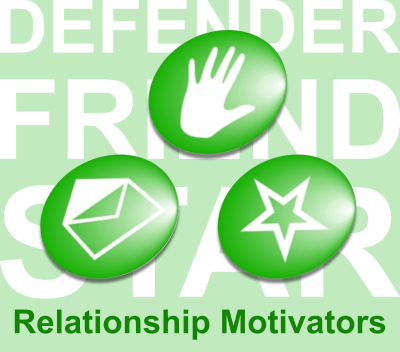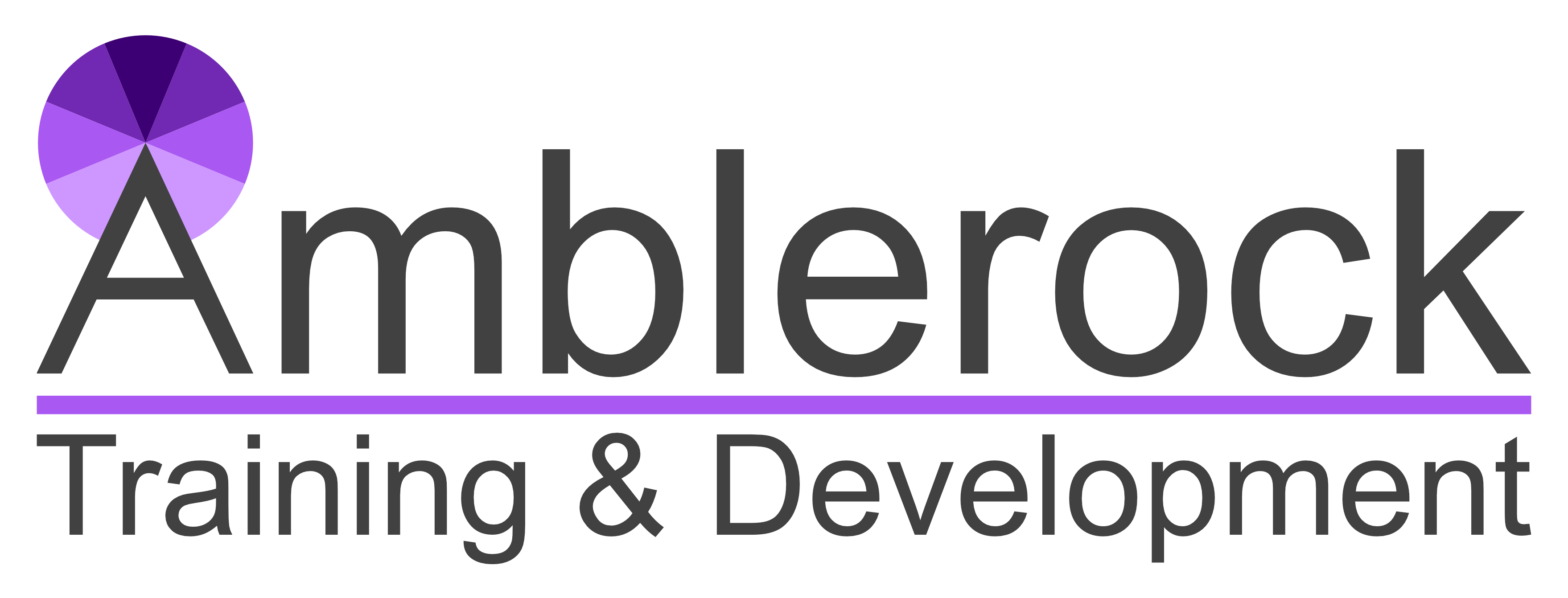Growth Cluster - Motivational Maps

What is the Growth Cluster?
Motivational Maps is a self-perception inventory which helps individuals identify the key motivators which drive them and the extent to which they are currently feeling motivated. The Map is made up of nine motivators which are formed into three clusters; Relationship, Achievement and Growth.
In this blog we will take a deep dive into the Growth cluster and explore what motivates and demotivates individuals who are driven by Creator, Spirit and Searcher…
Creator
The Creator motivator is driven by innovation and expressing their creative potential. Those with Creator as a dominant motivator are motivated by the opportunity to solve problems and create something new or improved. They enjoy change and variety and the chance to be original. Individuals with Creator are demotivated by a limited routine or excess of repetitive tasks. They also dislike not being involved or given the opportunity to solve problems and use their innovation and creativity.
To help keep the Creator motivator ‘topped up’ try these strategies:
- Reward their creativity and innovation.
- Involve them in the generation of ideas and opportunities to solve problems.
- Focus on providing a stimulating environment for them to feel creative.
Spirit
The Spirit motivator is all about freedom, independence and making their own decisions. This motivator is driven by the opportunity to work autonomously and having choice. They work best when they have an awareness of the bigger picture and are given clear and specific objectives (although not told exactly how to achieve them!)
They are demotivated by micromanagement and feeling that they are not in control of their journey and destiny. Being told when, where or how to work will usually dent their motivation.
Try to keep the Spirit motivator ‘topped up’ by trying these strategies:
- Share the organisation vision and values with them to help them see the bigger picture.
- Empower them to make their own decisions and reward them with autonomy and freedom.
- Encourage entrepreneurialism and an ‘owner’ mindset.
Searcher
The Searcher motivator is focused on making a difference and providing worthwhile things. Individuals who are driven by Searcher seek meaning and purpose in what they do. They value being listened to, consulted with and enjoy change and variety in their day to day. They are demotivated by routine and boring tasks that don’t add significant value to the cause or when they don’t receive feedback or clarity about the value they are adding.
Help to keep the Searcher motivator ‘topped up’ try these strategies:
- Give them regular feedback and praise.
- Involve them in significant projects where they can see how they impact the wider organisation’s goals.
- Ensure they have the equipment and resources they need to complete the tasks (or missions).
If you are interested in finding out more about Motivational Maps, look out for our other blogs about the Achievement and Relationship cluster.
Achievement Cluster - Motivational Maps

What is the Achievement Cluster?
Motivational Maps is a self-perception inventory which helps individuals identify the key motivators that drive them and the extent to which they are currently feeling motivated. The Map is made up of nine motivators which are formed into three clusters; Relationship, Achievement and Growth.
In this blog we will take a deep dive into the Achievement cluster and explore what motivates and demotivates individuals who are driven by Director, Builder and Expert…
Director
The Director motivator is all about power, influence and control of people and/or resources. Those with Director as a dominant motivator are motivated by being stretched and challenged, having responsibility and influence and making critical decisions. Additionally they need a clear career path because they like to be in control and are subsequently demotivated by not having opportunities to step up or shape the way things happen. Lastly, an individual with this motivator needs to be able to stretch themselves within the working environment.
Help to keep the Director motivator ‘topped up’ by trying these strategies:
- Delegate to them and give them responsibility and opportunities to deputise.
- Give them the chance to take control and make decisions.
- Allow them the opportunity to shadow more senior people.
- Have regular reviews of progress.
Builder
The Builder motivator is focused on money, material satisfactions and above average living. This motivator is driven by material and financial rewards, clear goals and targets and working in competitive environments. They like to have the latest tech and gadgets and are keen to complete training to help increase their chances of promotion and salary improvements. Another key point is that they will be demotivated by feeling stagnant and undervalued. People with Builder need to be able to see their career path because they thrive when given the opportunities to grow their salary and material benefits.
To help keep the Builder motivator ‘topped up’ try these strategies:
- Create competitive environments for them to excel and chase the biggest wins.
- Link their performance to bonuses or prizes.
- Give them responsibility and opportunities to maximise their benefits.
- Set clear, tangible goals and targets and keep them focused on the end goal.
Expert
If you have the Expert motivator, you are likely driven by expertise, mastery and specialism. Individuals who are driven by Expert value opportunities to learn and often enjoy contact with other experts in order to further their own understanding. Likewise, they like to share their expertise and are keen to specialise in areas of particular interest and become the go-to person. Individuals with Expert are demotivated by people not taking learning seriously and by not being listened to (as the expert). It is particularly important to give them the time and space to focus on their personal development.
Try keeping the Expert motivator ‘topped up’ with these strategies:
- Give them access to a Mentor (or a skilled expert) to help guide them.
- Allow them to spend time learning and upskilling.
- Create opportunities for them to share their knowledge with others e.g. as a trainer or mentor.
- Set them ambitious targets to stretch and challenge them.
If you are interested in finding out more about Motivational Maps, look out for our others blogs about the Relationship and Growth cluster.
Relationship Cluster - Motivational Maps

What is the Relationship Cluster?
Motivational Maps is a self-perception inventory which helps individuals identify the key motivators which drive them and the extent to which they are currently feeling motivated. The Map is made up of nine motivators which are formed into three clusters; Relationship, Achievement and Growth.
In this blog we will take a deep dive into the Relationship cluster and explore what motivates and demotivates individuals who are driven by Defender, Friend and Star…
Defender
The Defender motivator is all about security, predictability and stability. Those with Defender as a dominant motivator are motivated by clear roles and responsibilities and high levels of job security. They crave order, clarity and continuity, knowing what is coming next and having time to prepare. They can feel demotivated by uncertainty, ambiguity or unexpected change and are often negatively impacted when things feel unstable or if they don’t have clear and accurate information.
Help to keep the Defender motivator ‘topped up’ try these strategies:
- Provide clear, accurate and regular communications (especially of good news!)
- Offer support through periods of change with regular reassurance.
- Do what you can to reduce ambiguity and surprises.
- Link goal achievement to security (and break goals down in to short, medium and long term to maintain momentum)
Friend
The Friend motivator is focused on belonging, friendship and fulfilling relationships. Individuals who are driven by Friend, value a collaborative environment filled with nourishing relationships and loyalty. They are motivated by being listened to, liked and supported. The feeling of belonging and community is important because they can be demotivated by isolation or separation, when they don’t feel a part of things or when there is a lack of teamwork.
To keep the Friend motivator ‘topped up’ try these strategies:
- Keep them involved and consult with them.
- Provide opportunities for collaboration.
- Involve them in staff committees and in organising staff social events.
- Focus on teamwork and creating a strong team ethos.
Star
The Star motivator is all about recognition, respect and social esteem. This motivator is driven by social and public recognition, being noticed and held in high esteem. They are motivated by receiving physical tokens of achievement (awards, certificates etc) and thrive in competitive environments and when given positive feedback. They are demotivated by a lack of recognition, being overlooked or by not being given opportunities to shine.
Try keeping the Star motivator ‘topped up’ with these strategies:
- Provide some (healthy) competition for them to get their teeth into.
- Create a clear career journey and opportunities for promotion.
- Give them opportunities for prestige, awards or medals.
- Involve them in projects and work outside of their usual working teams.
If you are interested in finding out more about Motivational Maps, look out for our other blogs about the Achievement and Growth clusters.
Building Positive Relationships: A Manager's Guide (Part Two)

In the first part of this series about building positive relationships, we discussed six strategies to help managers connect better with their teams. Now, let's explore six more tips that can further strengthen those connections and improve overall team dynamics.
7. Provide Constructive Feedback
Offering constructive feedback is crucial for personal and professional growth. Be honest and specific when addressing areas for improvement. Balance your critique with praise by acknowledging your team members' strengths and achievements to encourage continued progress.
8. Foster a Collaborative and Positive Environment
Promote teamwork by encouraging open communication and collaboration among team members. Create a sense of shared responsibility and mutual support, ask questions so that everyone feels valued and involved in achieving common goals.
9. Encourage Work-Life Balance
Support your team members in maintaining a healthy work-life balance by respecting their personal time and setting reasonable expectations regarding workload. Having a balanced approach like this can serve to improve work relationships, but it can also contribute to increased job satisfaction and reduced burnout.
10. Be Consistent and Fair
Building positive relationships also means treating team members consistently and fairly, regardless of their position or responsibilities. Establish clear expectations from the start and ensure that rewards and consequences are applied equitably across the board.
11. Invest in Professional Development
Show your team members that you care about their career growth by investing in their professional development. Provide opportunities for skill-building, such as training programs, webinars, or workshops, and encourage them to apply their new knowledge to their roles.
12. Connect and Celebrate Successes Together
Recognise and celebrate the successes of your team as a whole. Whether it's a major project completion or reaching a crucial milestone, take time to acknowledge everyone's hard work and dedication. This reinforces the importance of teamwork and creates a sense of unity among team members.
Reflecting on Your Relationship-Building Efforts
As you implement these strategies, continue to reflect on how your relationships with your team members evolve:
- Are your connections becoming more positive and supportive?
- How have the new tips affected your relationships?
- What challenges or successes have you encountered?
Continue taking action! Stay committed to enhancing your relationships by regularly reviewing and adjusting your approach.
Creating strong friendships takes time and dedication, but it's worth it! By creating a supportive and uplifting atmosphere, everyone in the team can feel appreciated, excited, and ready to achieve their goals.
If you'd like more information on how I can help you develop as a manager, reach out. I look forward to hearing from you!
What Are Motivational Maps?
Motivational Maps are an ISO-accredited tool drawing on over a decade of research into human behaviour, organisational psychology, and motivation. They are not a personality test or a psychometric profiling tool, but a self-perception inventory that reveals key motivators and the level of motivation in individuals, teams, and organisations.
How do Motivational Maps work?
Motivational Maps work by analysing responses to a short online questionnaire, which generates a clear and easy-to-understand report. These reports reveal each person's key motivators and their level of motivation. Each report provides actionable advice on how to increase motivation where it matters.
The Nine Motivators
The Motivational Map is based on Nine Motivators across three clusters of information: motivation through relationships, motivation through achievements, and motivation through individual growth. These each contain three core motivations.

Benefits of Motivational Maps
These reports offer numerous benefits. They can enhance self-awareness, increase motivation and performance, improve engagement and productivity, and provide better career and personal development insights. They also provide valuable information for individuals and teams, giving them an understanding of what motivatates them and their colleagues.
Application in Personal Development
In the context of personal development, having this information can help an individual understand their core motivators, which can guide them in setting meaningful goals and making important life decisions. In some cases it can also help overcome personal and career development issues.
Application in Business
In a business context, Motivational Maps can help organisations understand how their employees' motivators align with their values, mission, and vision. They can also be useful to inform processes such as career and talent management and the performance management process.
Want to know more?
If you have questions or would like to know more, Amberock Training and Development are qualified practitioners for Motivational Maps and would happy to help, so please get in touch!
How Cool Blue can show up in your management style…

Insights Discovery is a powerful tool that uses a simple and memorable four-color model to help individuals understand their unique preferences. The four colours involved are Fiery Red, Sunshine Yellow, Earth Green, and Cool Blue. By understanding Insights Discovery, we can gain a better understanding of ourselves, our preferences, and the ways we operate. It also helps us to better understand those we interact with. This blog focuses on how the Cool Blue colour energy can manifest in our management style.
Cool Blue Managers: Strengths and Challenges
Managers with strong Cool Blue energy are known for their thoughtful, consistent, and methodical approach. They exhibit precision in communication and rely on logical reasoning for decision-making. These managers prefer organized environments and focus on details while adhering to guidelines.
However, under stress or pressure, the behaviour of managers who lead with this colour may appear rigid or inflexible as they cling to protocols and plans. Perfectionism or over-analysis can hinder project progress. In times of stress, they may retreat, making them seem distant or cold.
Improving Connection and Communication as a Manager
As a role model, it's crucial for managers who lead with Cool Blue energy to remain aware of their behavior and make conscious choices to connect better with their team. Here are some tips:
- Accept varied organizational styles: Remember that not everyone is naturally organized. Support your team members in working with their own styles.
- Share your thought processes: While you process information internally, invite others into your ideas and thought processes for better engagement.
- Dedicate time for team members: Plan regular one-on-one sessions with your team members for brainstorming and discussion.
- Learn to trust: Allow yourself to relax and trust your team to perform their best without imposing overly high expectations.
Explore our other blogs on Fiery Red, Sunshine Yellow, and Earth Green management styles for more insights.
To learn more about Insights Discovery and how it can create inspiring managers and exceptional teams, feel free to get in touch.
How Earth Green can show up in your management style…

Insights Discovery is a powerful tool that uses a simple and memorable four-color model to help individuals understand their unique preferences. The four colours involved are Fiery Red, Sunshine Yellow, Earth Green, and Cool Blue. By understanding Insights Discovery, we can gain a better understanding of ourselves, our preferences, and the ways we operate. It also helps us to better understand those we interact with. This blog focuses on how the Earth Green colour energy can manifest in our management style.
Earth Green Managers: Strengths and Challenges
Managers with strong Earth Green energy are typically helpful, supportive, and empathetic. They prioritize creating an ideal environment, respecting individual perspectives, and nurturing growth. Loyalty, commitment, and trust are essential to them. They also rely on personal values, morals, and core beliefs in decision-making.
However, when under stress or pressure, Earth Green behavior may appear indecisive or submissive as they struggle to maintain peace. This can result in lost momentum and frustrations within teams. Additionally, Earth Green managers may exhibit stubbornness or resistance to change.
Enhancing Relationships as an Earth Green Manager
As a role model, it's vital for managers that lead with this colour energy to be aware of their behavior and make conscious choices. Here are some tips for improving connections with your team:
- Acknowledge differing perspectives: Not everyone is as patient or amenable as you. Help others slow their pace and consider alternative viewpoints.
- Trust the process: Embrace challenges and changes as important components of overall success.
- Engage the whole team: Use your skills of connection to involve everyone in achieving goals.
- Adapt to different work styles: Tight deadlines and interruptions may not suit your preferences but are often necessary. Create an environment that works for both you and your team by implementing processes that accommodate everyone's comfort levels.
Keep an eye out for our other blogs on how Fiery Red, Sunshine Yellow, and Cool Blue energies can show up in management styles.
To learn more about Insights Discovery and how it can create inspiring managers and exceptional teams, feel free to get in touch.
How Sunshine Yellow can show up in your management style…

Insights Discovery is a powerful tool that uses a simple and memorable four-color model to help individuals understand their unique preferences. The four colours involved are Fiery Red, Sunshine Yellow, Earth Green, and Cool Blue. By understanding Insights Discovery, we can gain a better understanding of ourselves, our preferences, and the ways we operate. It also helps us to better understand those we interact with. This blog focuses on how the Sunshine Yellow colour energy can manifest in our management style.
Enthusiastic and Engaging Managers with Sunshine Yellow Energy
Managers with high levels of Sunshine Yellow in their profile are often seen as enthusiastic, engaging, and encouraging of others. They prioritize collaboration and teamwork while maintaining a positive outlook. Some key characteristics of managers who lead with this colour include:
- Involving people in decisions
- Embracing creativity and imagination in groups
- Adapting to change dynamically
- Prioritizing fun and engagement
Challenges with Sunshine Yellow Energy Under Stress
However, there are times when typical Sunshine Yellow behavior can be perceived differently by others, especially when under stress and pressure. As a result, managers who lead with Sunshine Yellow energy can become:
- Frantic or chaotic
- Easily distracted or side-tracked
- Overwhelmed by taking on too much
- Prone to leaving tasks or projects unfinished
Tips for Managers with High Levels of this Colour Energy
As a manager with high levels of Sunshine Yellow energy, you can enhance your relationships with your team members by:
- Respecting different communication styles: Not everyone is as open and adaptable as you. Give people time to reflect and respond in their own unique way.
- Staying focused under pressure: Remain calm, take a deep breath, and remember your goals even when you feel like panicking. Use your strength of collaboration to help you and your team get through difficult times.
- Encouraging others to find joy in their work: Create a positive work environment by organizing team lunches, fun activities, or setting aside time for employees to focus on tasks they enjoy.
Keep an eye out for our other blogs on how Fiery Red, Earth Green, and Cool Blue energies can show up in management styles.
To learn more about Insights Discovery and how it can create inspiring managers and exceptional teams, feel free to get in touch.
How Fiery Red can show up in your Management Style

Insights Discovery is a powerful tool that uses a simple four-colour model to help individuals understand their unique preferences and behaviours. The four main colours are Fiery Red, Sunshine Yellow, Earth Green, and Cool Blue.
Businesses using this pshycometric tool have seen a measurable impact and by understanding your Insights Discovery personal profile, you can:
- Gain a better understanding of yourself and your preferences.
- Improve communication and develop more effective relationships.
- Recognize colour energies in other people, which helps you to make conscious choices about actions and behaviours.
In this article, we will focus on how Fiery Red colour energy influences management styles.
The Fiery Red Manager: Decisive, Direct, and Action-Oriented
Managers with high levels of Red energy in their profile are often:
- Focused, determined, and proactive.
- Courageous risk-takers who move towards goals.
- Clear and direct communicators who inspire action.
- Fast decision-makers focused on speed and success.
However, there are times when typical Fiery Red behaviour can be perceived differently by others, especially those under stress and pressure. In these situations, this colour energy might be seen as coercive, controlling, arrogant or simply dismissive of other people's opinions.
Balancing Fiery Red Management: Tips for Enhancing Team Relationships
If you're a manager with high levels of this colour energy in your profile, consider these tips to strengthen the relationship with your team:
- Remember that not everyone operates at your pace. Listen and ensure that everyone feels heard.
- Focus on active listening without any distractions.
- Implement regular 'pulse checks' with your team for reassurance and engagement.
- Delegate responsibility and place trust in your team members to build their confidence.
Stay tuned: There are more colour energies to come!
Explore our other blogs on Cool Blue, Sunshine Yellow, and Earth Green management styles for more tips on identifying colour energies.
To learn more about Insights Discovery and how it can create inspiring managers and exceptional teams, feel free to get in touch.
Avoiding the Weeds: How to Stay Focused as a Manager

Do you ever find yourself:
- Feeling overwhelmed by details and losing sight of the bigger picture?
- Spending more time planning than actually doing?
- Working hard but not making much progress?
If you answered yes to any of these questions, you might be getting "stuck in the weeds".
Here are some ways to recognise this issue and overcome it in your management role.
What does it mean to be "Stuck In the Weeds"
Being "in the weeds" means getting bogged down and distracted by details, causing you to lose sight of the way forward and the bigger picture. It can happen for various reasons, such as wanting to understand all the details, being scared that things will go wrong without your expert eye, or not yet trusting your team members.
However, staying in the weeds isn't ideal for your management role. It can lead to inefficient use of your time, hinder team development, and cause demotivation.
How to Get Out of the Weeds
Here are some strategies for avoiding the weeds and staying focused on your management responsibilities:
- Delegate: Decide to take a step back and enable someone else to understand the detail instead of you. Determine who is the right person for each task and what information you genuinely need.
- Request Summaries: Encourage your team members to provide summaries and top-line information instead of detailed reports. This helps prevent getting sucked back into the details.
- Evaluate Your Involvement: Think carefully about which conversations and meetings you participate in. Ensure that your involvement adds real value and is necessary rather than just habit or personal preference.
- Stay Focused on the Bigger Picture: Remind yourself to concentrate on the road ahead, including strategy and long-term goals, rather than getting lost in small details. Seek support from colleagues or mentors to help change your approach.
If you have any tips and tricks on avoiding those distractions and not getting overly involved, we would love to hear them. But if you would like more help and guidance on this matter, feel free to get in touch!









